O OVGA é um Centro de Ciência que desenvolve atividade de investigação aplicada e de divulgação científica na área da Vulcanologia, da Sismologia e da Geotermia.
Notícia -A A +A
How Does a Volcano Work? - Notícia OVGA 23-10-2017
Every day a volcano erupts somewhere in the solar system. Earth is dotted with active volcanic features such as the very active Mount Agung in Bali, Bárðarbunga in Iceland, and Colima in Mexico. Jupiter's moon Io is highly volcanic, spewing sulfurous lava from beneath its surface. Saturn's moon Enceladus also has geyser features related to volcanism, but instead of erupting with molten rock as on Earth and Io, it spews out slushy ice crystals. What happens when a volcano erupts?
Volcanoes do major work in building up landforms and resurfacing landscapes on Earth as they spew out lava and other materials. On Earth, volcanoes have been around since the planet was an infant, and they played a role in creating the continents, deep-sea deposits, mountains, volcanic craters, and helped build up our atmosphere. Not all volcanoes that have flowed since the beginning of time are currently active. Some are long-dead and will never again be active. Others are dormant (meaning they could erupt again in the future).
Geologists study volcanic eruptions and related activities and work to classify each type of volcanic land feature. What they learn gives them more insight into the interior workings of our planet and other worlds where volcanic activity takes place.
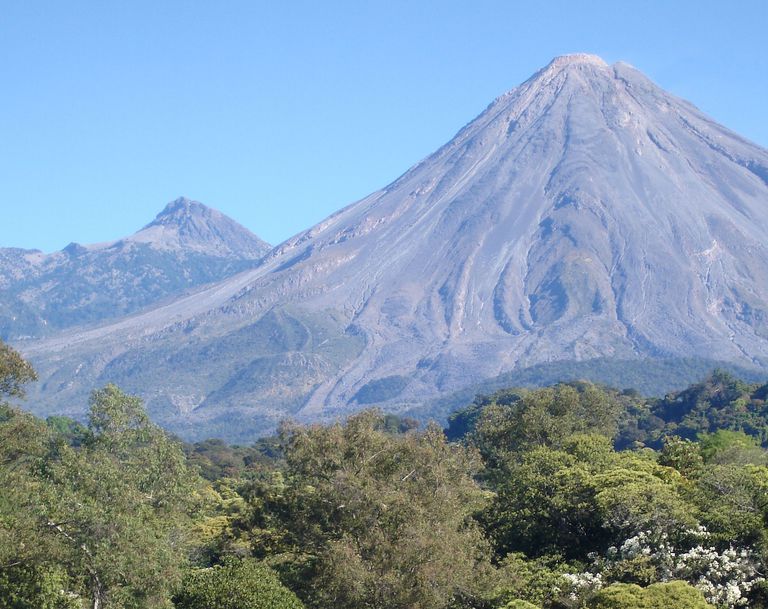
The Colima Volcanoes in Mexico. These are active, but currently quiet. JRobertiko
Localização do Vulcão Colima
Volcanic Eruption Basics
Most people are familiar with volcanic explosions like the one that blew apart Mt. St. Helens in Washington State in 1980. That was a dramatic eruption that blew part of the mountain away and showered billions of tons of ash on surrounding states. However, it's not the only one in that region. Mt. Hood and Mt. Rainier are also considered active, although not as much as their sister caldera. Those mountains are known as "back-arc" volcanoes and their activity is spurred by plate motions deep underground.
The Hawaiian island chain was built up over millions of years by the action of volcanoes. The most active ones are on the Big Island and one of them — Kilauea — continues to pump out thick lava flows that have resurfaced much of the south area of the island. Volcanoes also erupt all along the Pacific Ocean basin, from Japan south to New Zealand. Mt. Etna in Sicily is quite active, as is Vesuvius (the volcano that buried Pompeii and Herculaneum in 79 AD).
Not every volcano builds up a mountain. Some vent volcanoes send pillows of lava out, particularly from undersea eruptions. Vent volcanoes are active on the planet Venus,where they pave the surface over with thick, viscous lava. On Earth, volcanoes erupt in various ways.
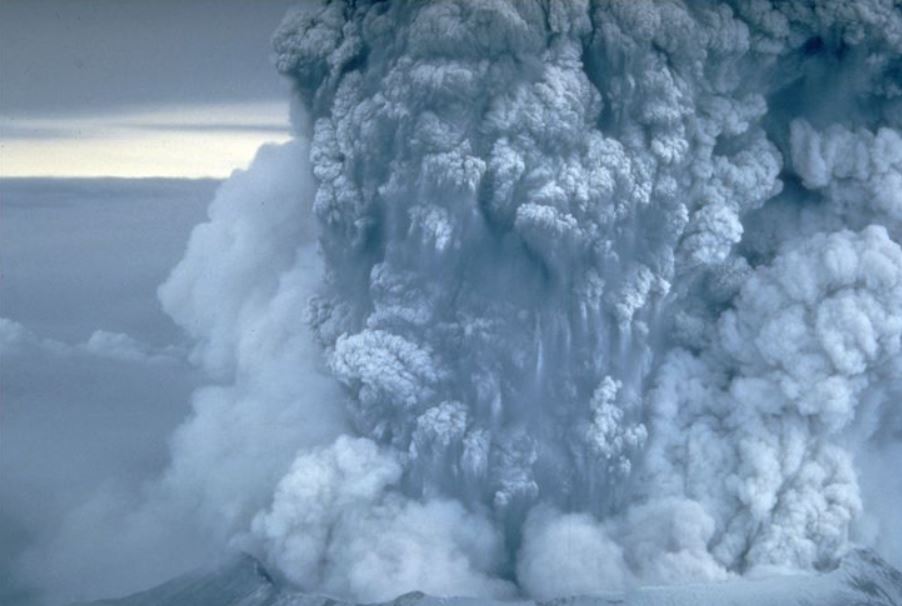
The eruption of Mt. St. Helens on May 18 1980, blew millions of tons of ash and gas into the air. It resulted in several deaths, catastrophic flooding, fires, the destruction of nearby forests and buildings, and scattered ash for hundres of miles around. USGS
Localização do Vulcão St. Helens
How Do Volcanoes Work?
Volcanic eruptions (also known as volcanism) provide a way for material deep beneath the surface to escape to the surface and atmosphere. They are one way for the planet to vent its heat. Active volcanoes on Earth, Io, and Venus are fed by subsurface molten rock. On Earth, the supplies of molten lava come up from the mantle (which is the layer under the surface). Once there's enough molten rock — called magma — and enough pressure to force it up to the surface, a volcanic eruption occurs. In many volcanoes, the magma rises up through a central tube or "throat," and emerges out the top of the mountain.
In other places, magma, gases and ash flow out through vents which eventually grow to become cone-shaped hills and mountains. Such activity can be fairly quiet (as it is on the Big Island of Hawai'i), or it can be quite explosive. In a very active flow, clouds of gas may come rolling out of the volcanic caldera. These are quite deadly because they're hot and moving fast, and the heat and gas and kill someone very quickly.
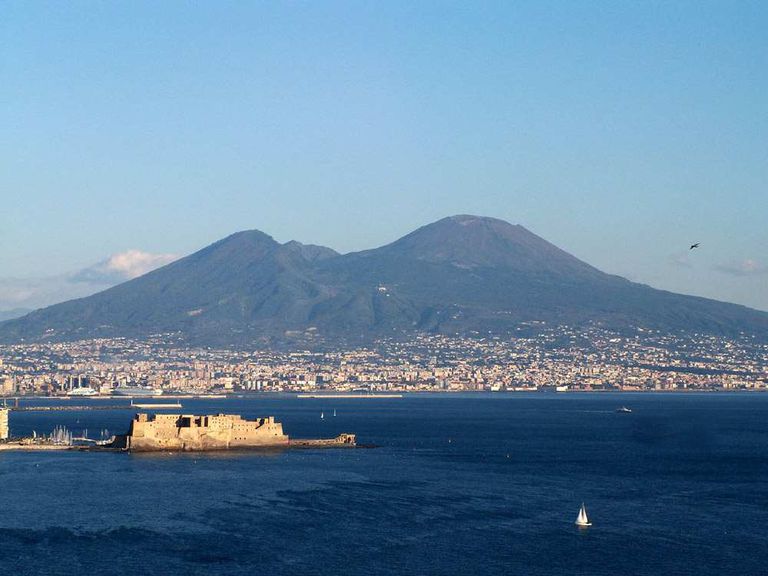
Mount Vesuvius is na active volcano that buried the cities of Pompeii and Herculaneum in 79 AD. Today, it towers over the metropolitan area of Naples, two hours away from Rome. Public domain (Via Wikimedia Commons).
 Localização do Vulcão Vesúvio
Localização do Vulcão Vesúvio
Volcanoes as Part of Planetary Geology
Volcanoes are closely related to continental plate movements. Deep under the surface of our planet, huge tectonic plates are slowly jostling and moving. At the boundary where two or more plates come together, magma can creep up to the surface. The volcanoes of the Pacific Rim have been built up this way, where plates slide together creating friction and heat, allowing lava to flow freely. Deep-sea volcanoes also erupt with magma and gases.
The Hawaiian islands are actually the result of what's called a volcanic "plume" underneath the Pacific Plate. Right now, the Pacific Plate is moving slowly to the southeast, and as it does, the plume is heating the crust and sending material to the surface. As the plate moved southward, a new spot was heated, and a new island was built from molten lava forcing its way to the surface. The result is the Hawaiian islands. The Big Island is the youngest of the islands to rise above the surface of the Pacific Ocean, although there's a newer one being built called Loihi.
In addition to active volcanoes, several places on Earth contain what are called "supervolcanoes." These are geologically active regions that lie atop massive hotspots. The best known is the Yellowstone Caldera in northwestern Wyoming in the U.S. It has a deep lava lake and has erupted several times throughout geologic time.
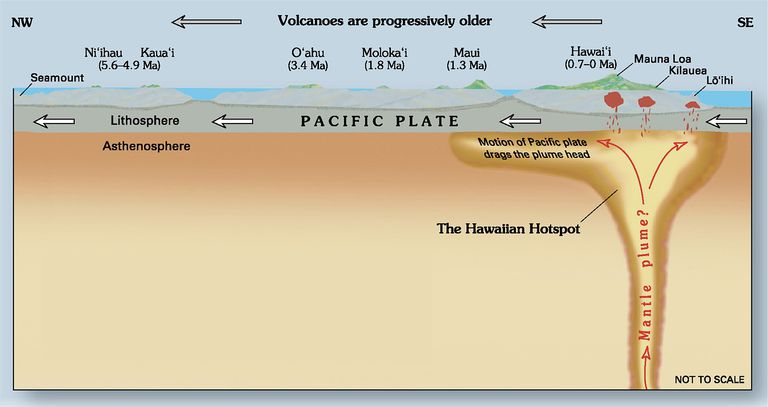
The Hawaiian islands are the result of a hotspot that created each Island as the Pacific plate moved. Similar hotspots exist round the planet. USGS interpretation
Localização do Havai
Types of Volcanic Eruptions
Volcanic eruptions are usually heralded by earthquake swarms, which indicate the motion of molten rock beneath the surface. Once an eruption is imminent, the volcano can spew out lava in two forms, plus ash, and heated gases.
Most people are familiar with the sinuous-looking ropy "pahoehoe" lava (pronounced "pah-HOY-hoy"), which has the consistency of molten peanut butter. It cools very quickly to make thick black deposits on the surface. The other type of lava that flows from volcanoes is called "A'a" (pronounced "AH-ah"). It looks like a moving pile of coal clinkers.
Both types of lava have gases entrained in them, which they release as they flow. Their temperatures can be more than 1,200° C. The hot gases released in volcanic eruptions include carbon dioxide, sulfur dioxide, nitrogen, argon, methane, and carbon monoxide, as well as water vapor. Ash, which can be as small as dust particles and large as rocks and pebbles, is made of cooled rock and is flung out from the volcano.
In very explosive volcanic eruptions, ash and gases are mixed together in what's called a "pyroclastic flow". Such a mixture moves very fast and can be quite deadly. During the eruption of Mt. St. Helens in Washington, Mount Pinatubo in the Philippines, and the eruptions near Pompeii in ancient Rome, most people died when they were overcome by such killer flows.
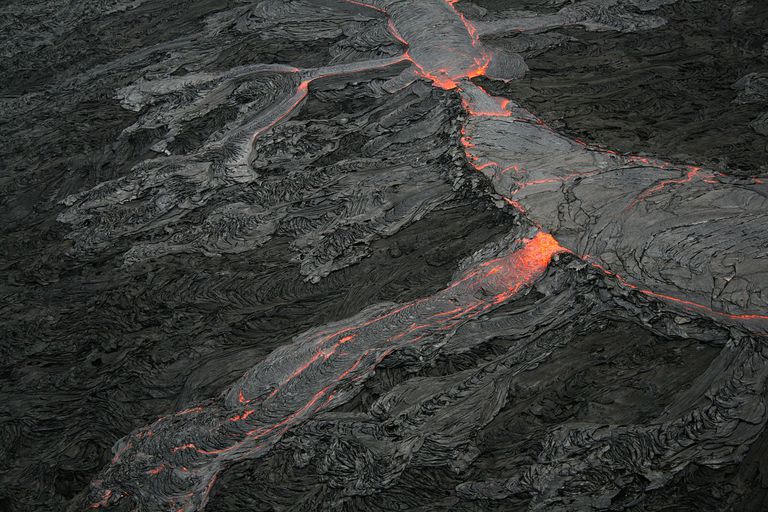
A pahoehoe flow on the Big Island of Hawai’i. This is thick, ropy lava that almost acts like a “pavement” on a landscape. USGS
Volcanoes are Necessary to Planetary Evolution
Volcanoes and volcanic flows have affected our planet (and others) since the earliest history of the solar system. They have enriched the atmosphere and soils, at the same time they have posed drastic changes and threatened life. They're part of living on an active planet and have valuable lessons to teach on other worlds where the volcanic activity takes place.
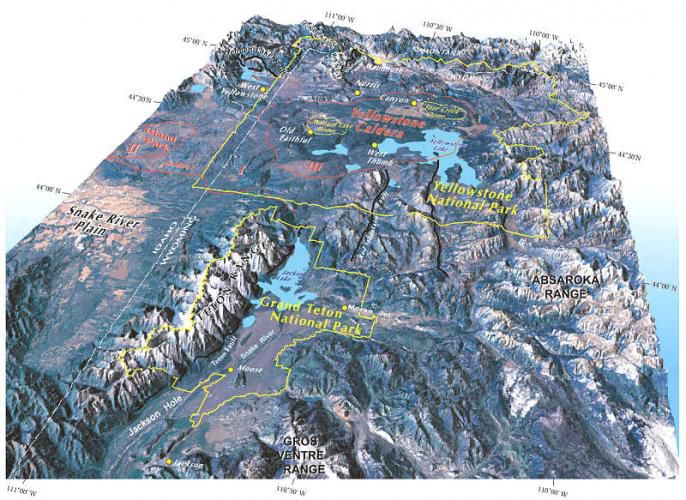
Supervolcanoes, such as the one in Wyoming, underlie several places on Earth. They often have active volcanoes, geyser and hot spring activity, and other volcanic features. They’re jus tone part of the larger volcano collection on planet Earth. USGS
Fonte: https://www.thoughtco.com
Adenda OVGA (V.H.Forjaz, outubro 2017): do texto que acima divulgamos ressaltam diversos conceitos sobre os processos físicos e químicos que conduzem às manifestações vulcânicas terrestres (= subaéreas). No mundo submarino continuam a surgir surpreendentes novas descobertas, sintomas de que os mecanismos de “arranque” vulcanológico ainda se encontram em fase de variadas interpretações. Os Açores constituem um caso concreto apesar da existência de redes de vigilância serem operadas por diversas entidades oficiais. O território vulcânico submarino dos Açores requer a aplicação de novas técnicas de recolha de dados. Onde a recolha de amostragem in situ, o respetivo estudo petrogeoquímico e correlações com outros cenários mundiais, permitiram compreender os complexos mecanismos do “comportamento temporal” do vulcanismo nestas ilhas.
